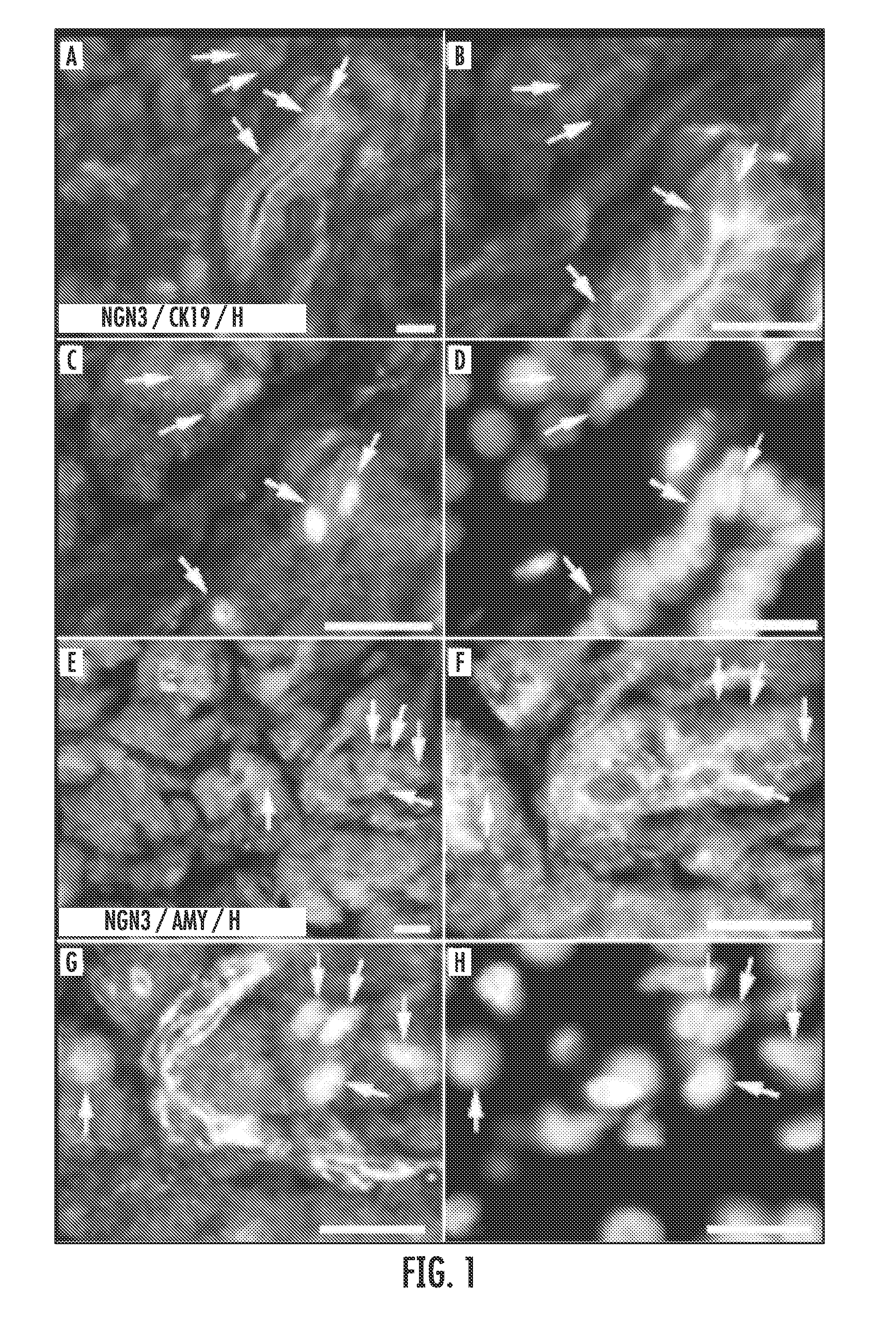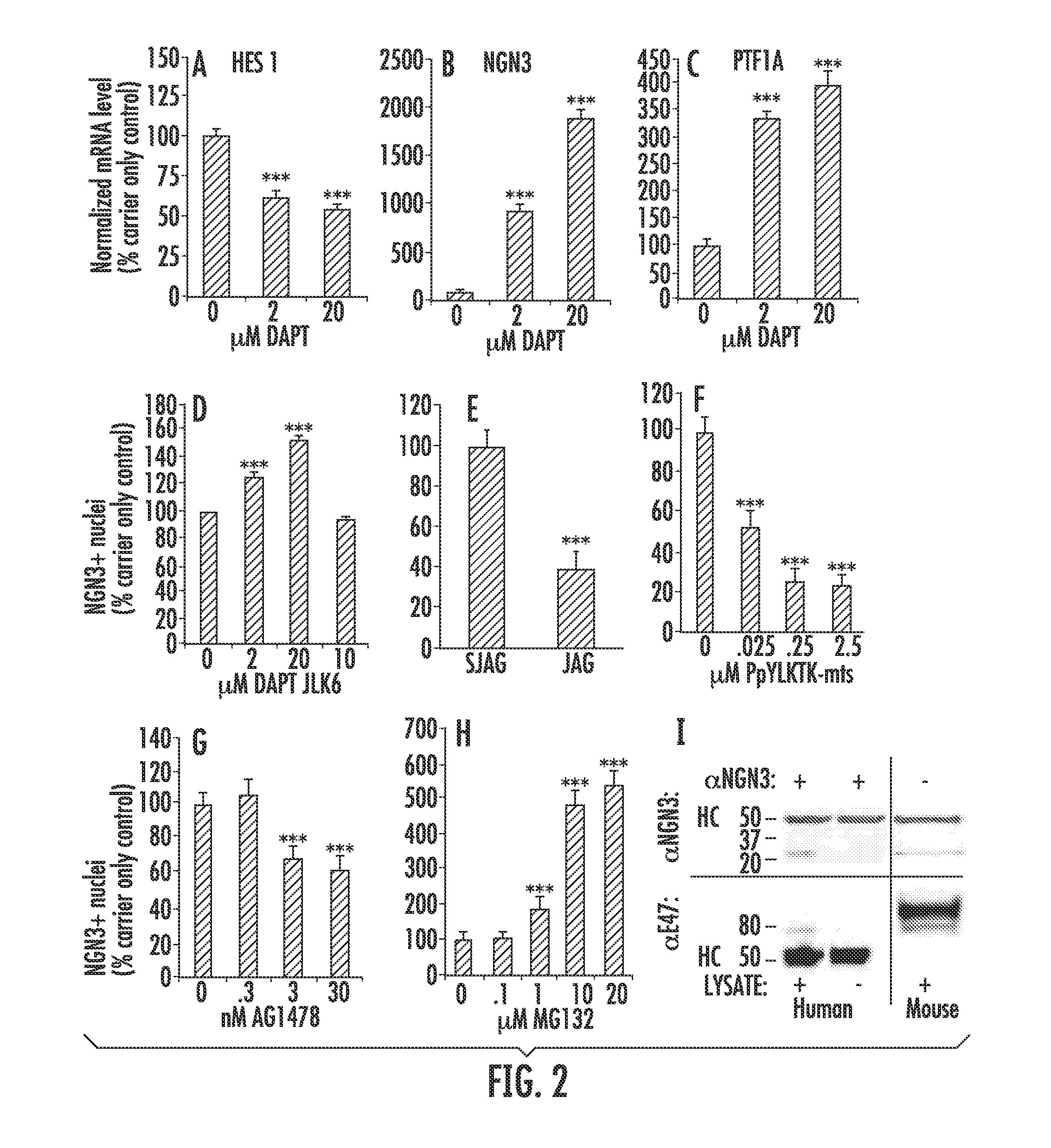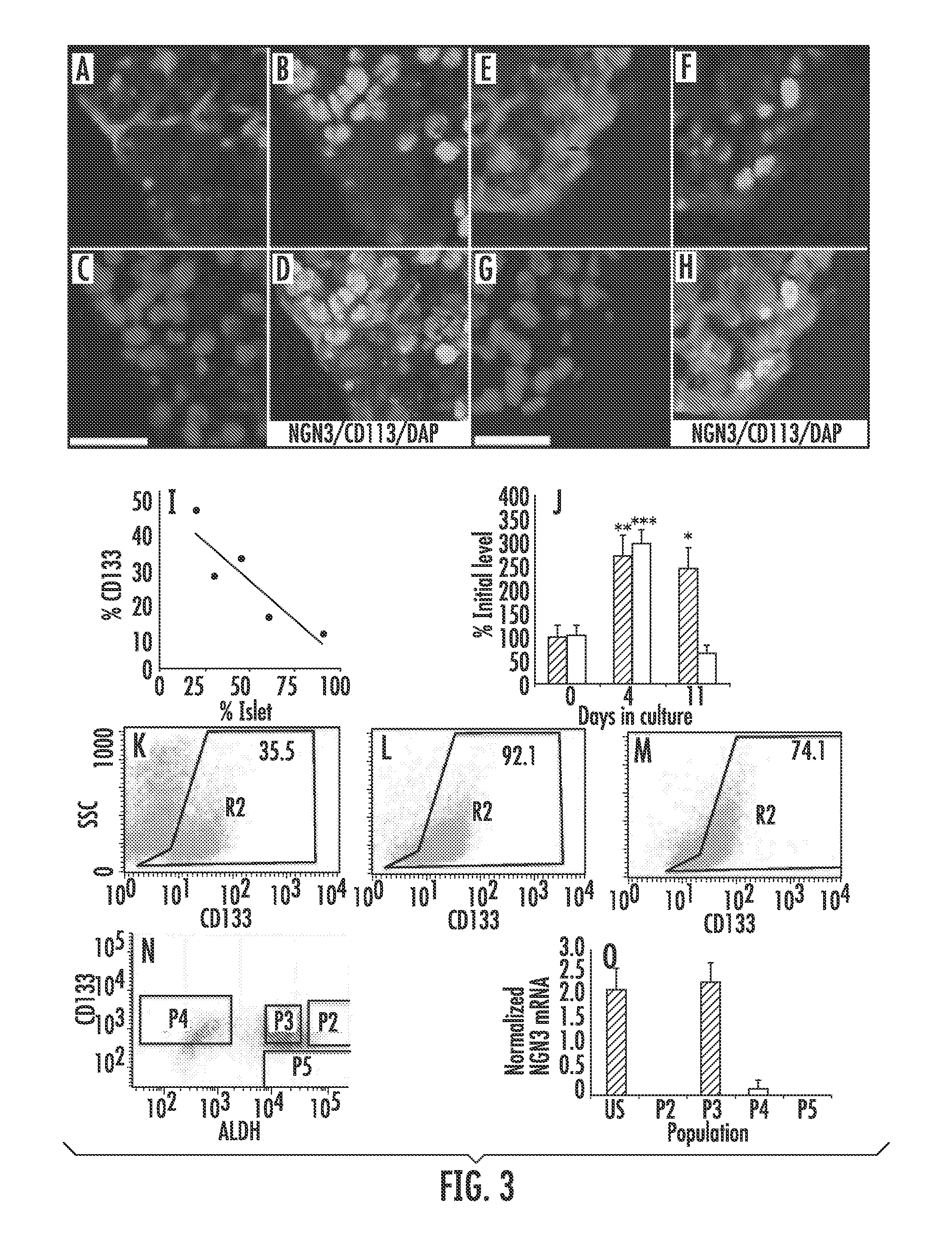Human endocrine progenitors from adult pancreatic tissue
- Summary
- Abstract
- Description
- Claims
- Application Information
AI Technical Summary
Benefits of technology
Problems solved by technology
Method used
Image
Examples
example 1
NGN3 is Expressed by Acinar and Duct Cells in the Adult Human Pancreas
[0091]NGN3 expression was detected in grossly and histologically normal tissues from five surgically resected pancreata. In all five pancreata, NGN3 was localized in the nucleus of amylase (AMY)+ acinar cells and cytokeratin 19 (CK19)+ duct cells (FIG. 1A-H). The level of NGN3 expression varied between patients and was both heterogeneous and spatially restricted within individual tissue sections. In randomly selected fields of >100 nuclei, the mean±s.e.m % NGN3+ cells was 2.4±1.1%. Exocrine NGN3 expression was identified in an additional 15 patient biopsies.
example 2
NGN3 Protein and Neurogenic Differentiation 1 (NEUROD1) mRNA Expression Increases During Culture of Pancreatic Tissue
[0092]Enzymatically-digested adult human cadaveric pancreas preparations containing a mixture of exocrine tissue and islets (pancreatic tissue) were received two to three days post mortem (D2-D3) and cultured in defined media for 4 days. This culture system was used to investigate changes in the expression of NGN3 in tissue undergoing ADM. In three independent (different organ donors) pancreatic tissue preparations, the mean±s.e.m percentage of cells expressing AMY on D7 decreased significantly to 7.3%±3.4 relative to D3 (P<0.001, n=3). The mean±s.e.m percentage of cells expressing CK19 relative to D3 increased significantly to 180.7%±19.6 (P<0.01, n=3).
[0093]The percentage of cells expressing nuclear NGN3 protein (representative images of NGN3 expression in cultured tissue in FIG. 3B, F) increased significantly after 4 days in culture compared to initial levels (mean...
example 3
NGN3 is Negatively Regulated by Notch Signaling
[0094]In order to investigate the involvement of Notch signaling in cultured pancreatic tissue, Notch was inhibited with the γ-secretase inhibitor DAPT (25) and the mRNA levels of the Notch downstream negative regulator of NGN3, Hairy and Enhancer of Split 1 (HES1) (1, 26, 27) were determined as was the mRNA and protein levels of NGN3. The level of HES1 mRNA decreased significantly after 4 days of culture in the presence of 2 μM and 20 μM DAPT to 63.0%±3.3 (P<0.001, n=6 readings) and 55.4%±1.5 (P<0.001, n=6 readings) of carrier control, respectively (FIG. 2A). The level of NGN3 mRNA increased significantly in the presence of 2 μM and 20 μM DAPT to 927.4%±52.6 (P<0.001, n=6) and 1886.3%±102.4 (P<0.001, n=6) of carrier control, respectively (FIG. 2B).
[0095]PTF1A plays a critical role in the formation and spatial organization of the murine exocrine and endocrine pancreas (28) and marks precursor cells that give rise to all exocrine and mos...
PUM
 Login to View More
Login to View More Abstract
Description
Claims
Application Information
 Login to View More
Login to View More - R&D
- Intellectual Property
- Life Sciences
- Materials
- Tech Scout
- Unparalleled Data Quality
- Higher Quality Content
- 60% Fewer Hallucinations
Browse by: Latest US Patents, China's latest patents, Technical Efficacy Thesaurus, Application Domain, Technology Topic, Popular Technical Reports.
© 2025 PatSnap. All rights reserved.Legal|Privacy policy|Modern Slavery Act Transparency Statement|Sitemap|About US| Contact US: help@patsnap.com



